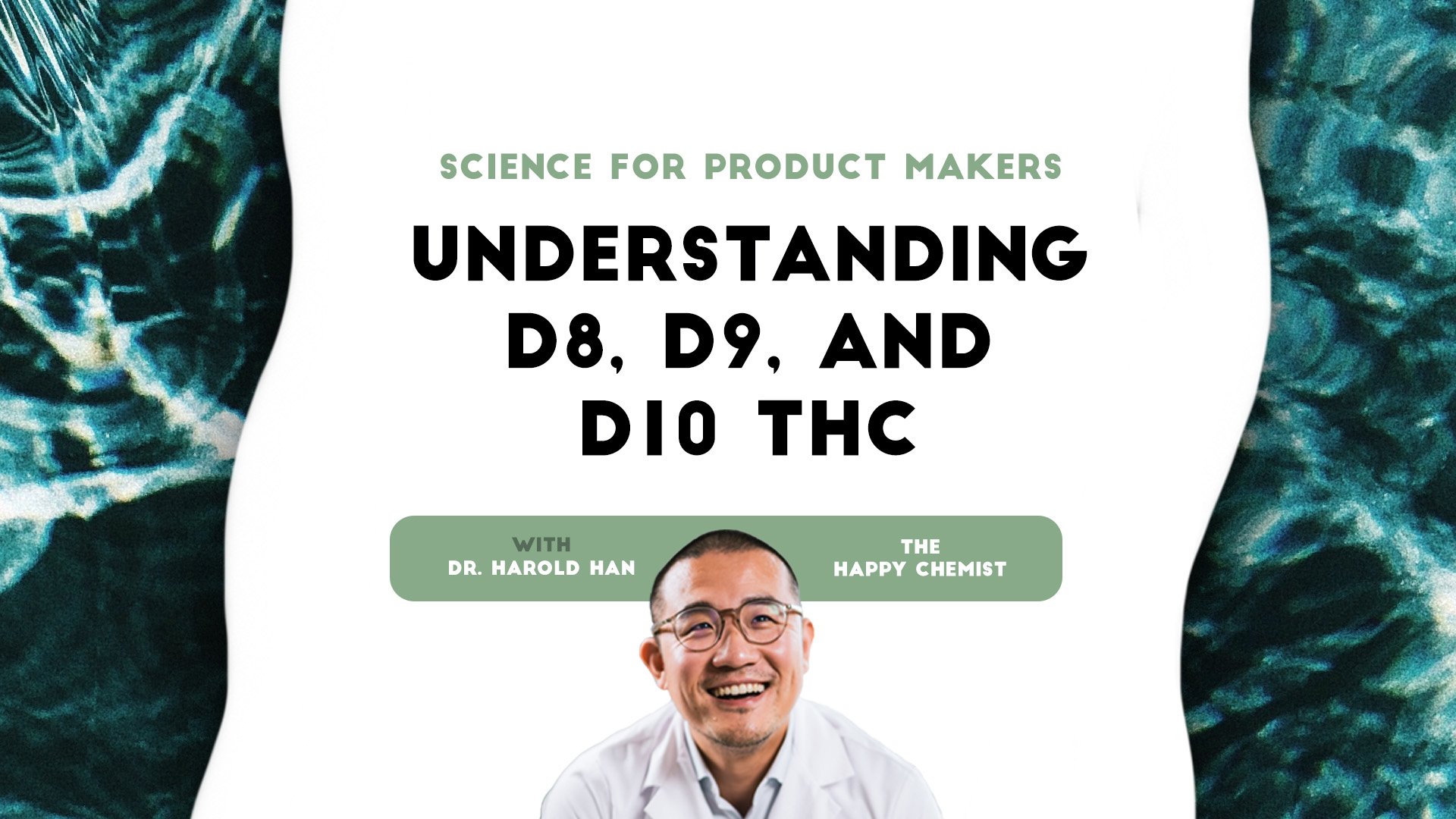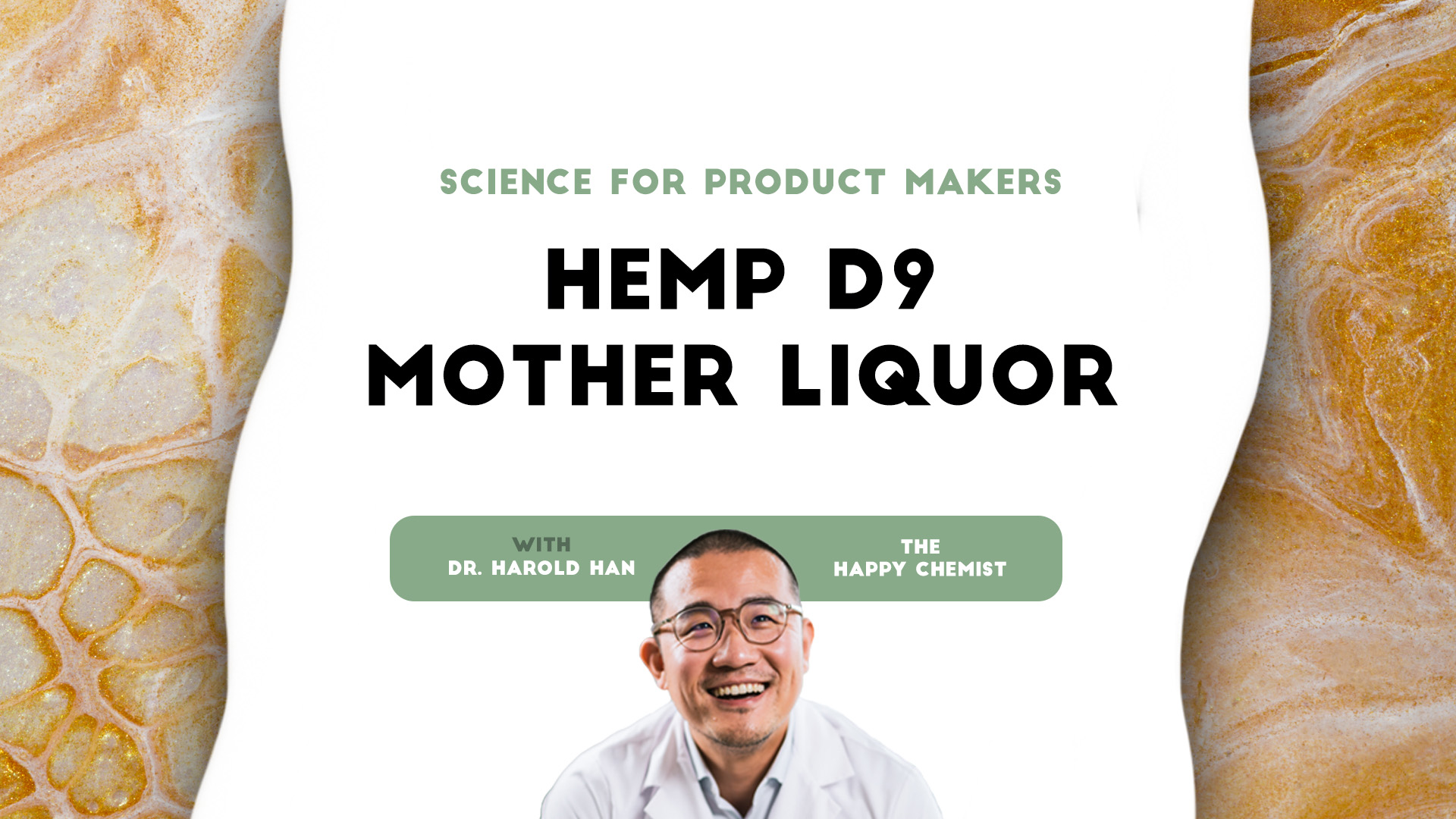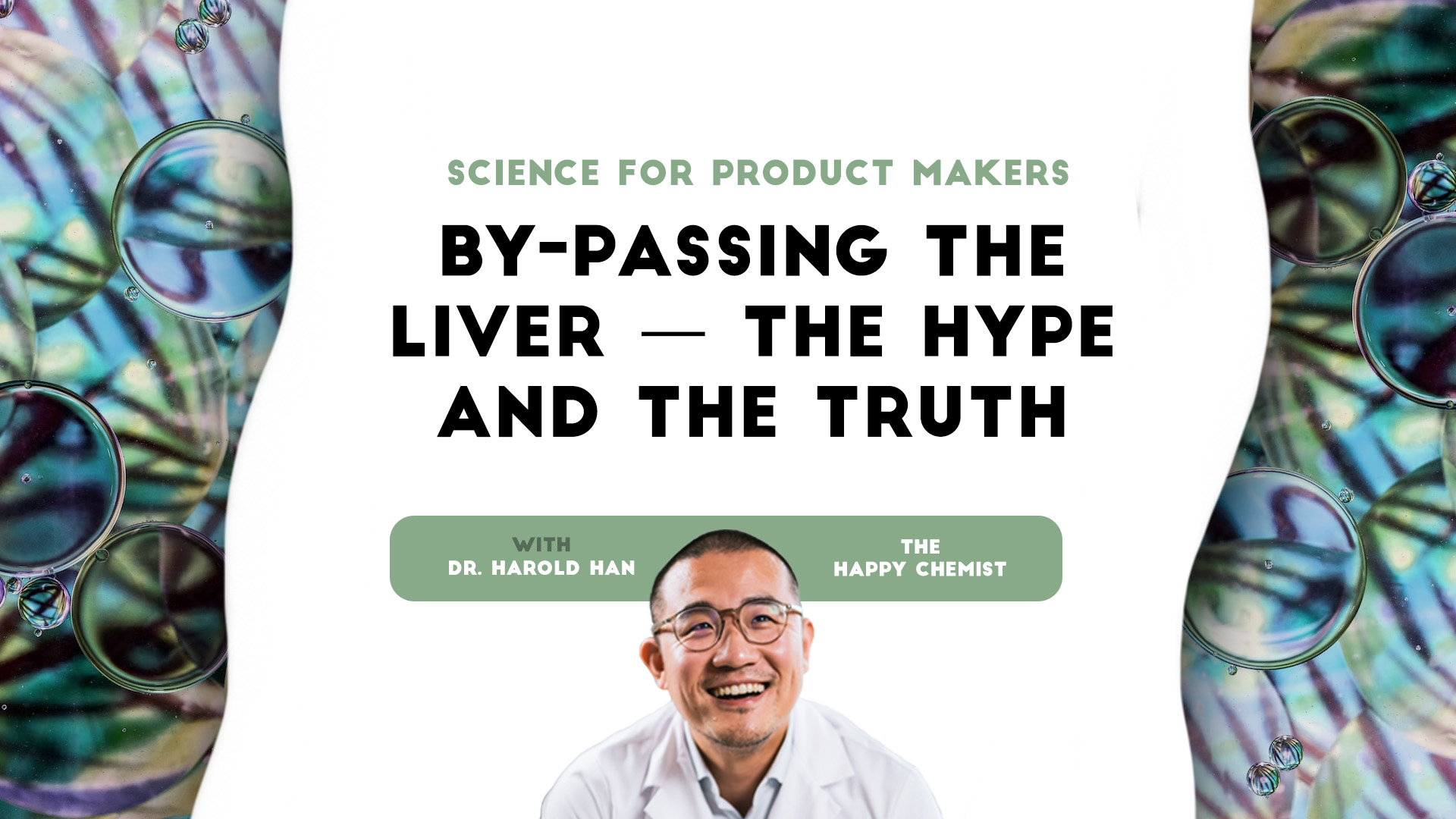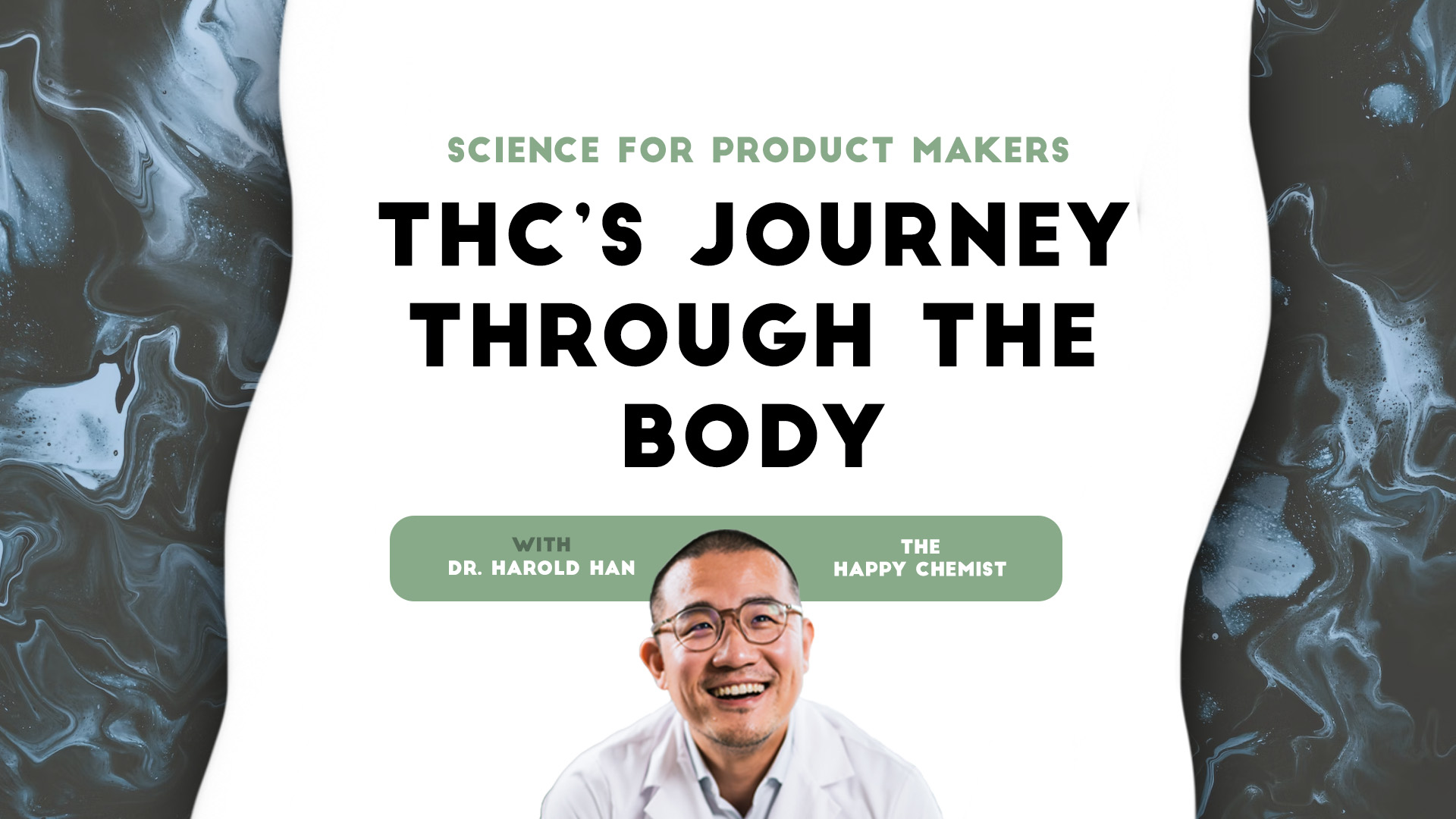Science for product makers: Hemp D9 Mother Liquor
This post is also published as an article on Harold's LinkedIn profile. You can read and leave comments here.
3 min read
 Dr. Harold Han - "The Happy Chemist"
:
4/17/24 5:05 PM
Dr. Harold Han - "The Happy Chemist"
:
4/17/24 5:05 PM

This post is also published as an article on Harold's LinkedIn profile. You can read and leave comments here.
Since Minnesota’s legalization of low doses of hemp-derived D9 THC, the proliferation of the hemp-derived intoxicant market has exploded. You may have started hearing a lot more about D8, D9, and D10 — but there’s still a lot of confusion about the differences between them. People have been asking clarifying questions, such as:
Today, I’ll take you through a crash course on the chemistry of cannabis, focusing on the nomenclature and structural as well as physiological differences amongst these compounds.
The best place to start is by understanding Cannabinol (CBN). The other names (D8, D9, D10) are built upon this base structure.
Below is the chemical structure of CBN — both simplified (how it’s usually expressed) and extended (listing all carbons and hydrogens). We’ll be focusing on the ring structure highlighted in yellow for the duration of this lesson. In the simplified structure, you can see that CBN has 3 double bonds circled in red, resulting in 3 total hydrogens (-H), which you can see circled in blue in the extended structure on the right.

Now let’s look at THC, or TetraHydroCannabinol (tetra = 4, hydro = H, cannabinol = CBN), indicating that THC has 4 more hydrogens than CBN. Let’s take a look. THC’s chemical structure is almost identical to CBN’s, except that the yellow highlighted ring contains 7 hydrogens, which is 4 more than CBN. So, TetraHydroCannabinol (THC) refers to CNB with 4 additional hydrogens.

In chemistry, D stands for Delta (which you’ll sometimes see written as Δ) which is simply another way to say “double bond”. The number after D defines where the double bond is.
When a new molecule is discovered, the IUPAC (International Union of Pure and Applied Chemistry) follows an internationally agreed-upon rule to designate a number to each carbon. Below are the numbers arranged for THC.

Above is THC’s carbon designations numbered. Don’t worry about how they’re numbered. Just know that this is the IUPAC standard.
When a double bond connects two carbons, the carbon with the smaller number defines the double bond position. For example, D8-THC has a double bond connecting carbon 8 to carbon 9; D9-THC has a double bond connecting carbon 9 and carbon 10. And when the double bond connects carbon 10 and carbon 10a, we call it D10-THC.

Effectively, the only structural difference between D8, D9 and D10 is their double bond location, but this seemingly small difference can have distinctive biological effects.
This simple change of the double bond location can bring dramatic changes to the pharmacology and their effects on humans.
Based on a recent review, D8 has a weaker affinity to the CB1 receptor than D9, resulting in a potentially less intoxicating experience in humans. The metabolism of Δ8-THC is similar to Δ9-THC and both have an active 11-OH metabolite that is more potent than its respective parent.
Another paper did an in vitro study on D10. It proves D10-THC isomers not only showed lower affinity toward the cannabinoid CB1 receptor compared with D9-THC, but also, in contrast to D9-THC, failed to demonstrate any agonist property at this receptor. The study suggests that D10 may not generate psychoactive effects like D9-THC.
This paper from 1988 indicates why a small change in the double bond location leads to a huge difference in the effect. It is about the orientation of carbon 9 relative to the oxygen in the phenol ring. When the double bond associates with carbon 9, it points to the top face of the molecule, which makes this molecule psychoactive. When the double bond does not associate with carbon 9, it points to the bottom face of the molecule, which makes it non-psychoactive.
Wow, what a wild world! We sure are thankful that the most abundant compound the cannabis plant produces (D9-THC) is the most psychoactive.
The answer is no. First, we need to acknowledge that cannabis and hemp are the same plant, while the regulation sets them apart. When we say D9, it only means D9-THC, which can come from either hemp or cannabis. Therefore, it is best to point out its origin, such as Hemp D9.
Dr. Harold Han — the “Happy Chemist” — combines his storied background in emulsion chemistry and science with curiosity and fascination in the rapidly growing cannabis industry. Developing nano and micro emulsions his entire career, Harold holds a Ph.D in Surface Chemistry from NYU and is the inventor of multiple patents in emulsion chemistry.
As the Chief Science Officer at Vertosa, Harold spearheads the company’s development of industry-leading and customized active ingredients for infused product makers, offering pre-suspended aqueous solutions to create incredibly homogenous and stable products while maximizing bioavailability, clarity, and taste.
To learn more about the science of cannabis, check out Harold’s Happy Chemist videos.

This post is also published as an article on Harold's LinkedIn profile. You can read and leave comments here.

This post is also published as an article on Harold's LinkedIn profile. You can read and leave comments here. Our liver is a well-trained bodyguard...

This post is also published as an article on Harold's LinkedIn profile. You can read and leave comments here.